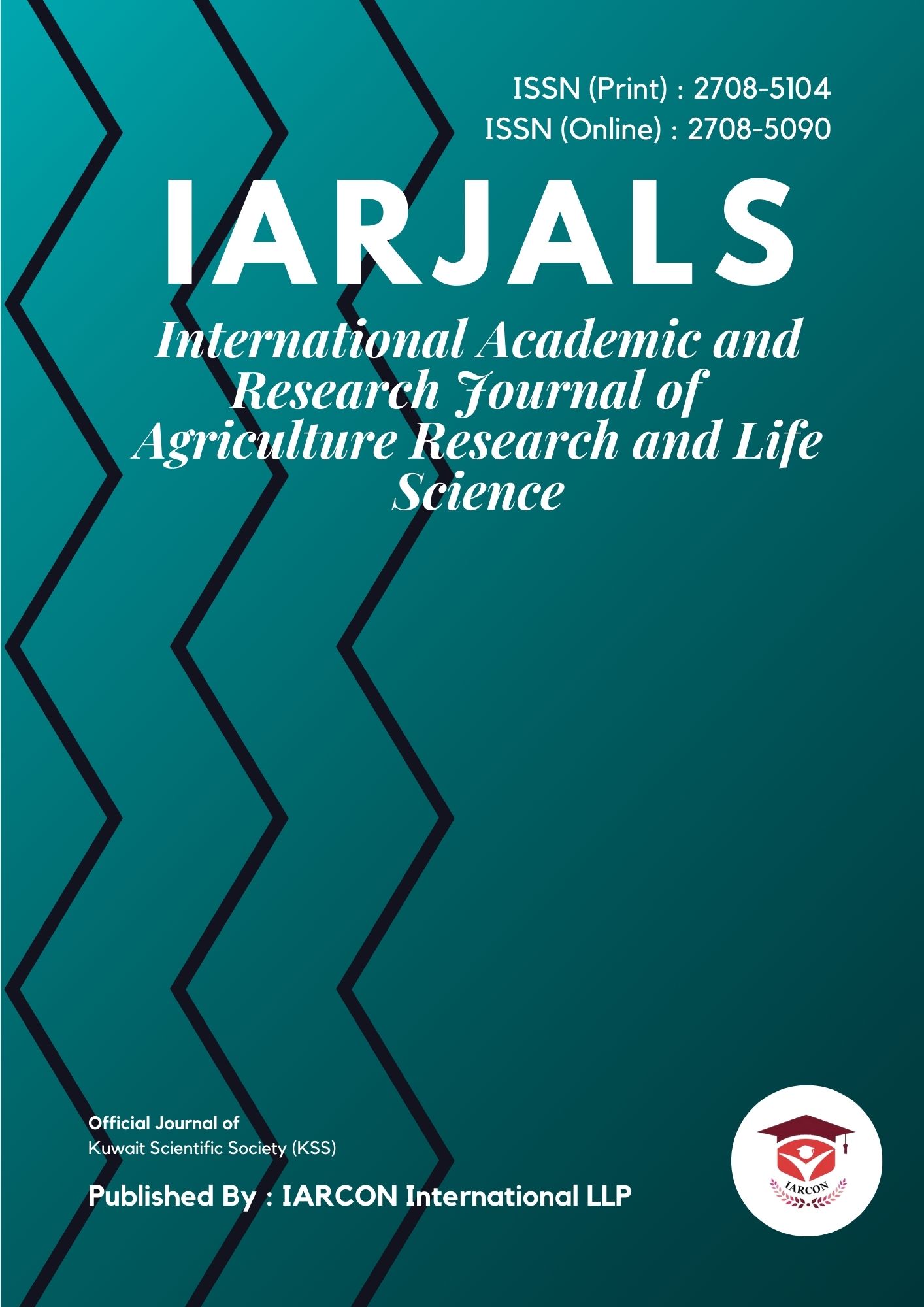Effect of combined interaction of mycorrhizal and trichoderma fungi on mineral content and oxidative stress of two cultivars of field Peanut plants Arachis hypogaea L. grown under water stress conditions
Water stress is seen as a severe injury that has an adverse effect on the plant, which in turn has an impact on the crop and food supply. The field experiment was carried out in the wooded canopy during the 2023–2024 farming season of the Forestry Department/College of Agriculture and Forestry/University of Mosul to study the overlapping effect of mycorrhizal and Trichoderma fungi in estimating the mineral content and oxidative stress of two varieties of field pistachio plants under the influence of different levels of field capacity, which were used in the experiment. Three irrigation treatments (25, 50 and 75) % of field capacity and four levels of biological fertilization: treatment without inoculation (C), inoculation with mycorrhizae (M), inoculation with Trichoderma (T), and the interaction between mycorrhizae and Trichoderma (M+T). Three replications of a randomized complete block design (RCBD) were used to conduct the experiment. Irrigation treatments were distributed randomly on the main panels, while biofertilization treatments were distributed on the secondary panels. The findings demonstrated that, at 75% field capacity, the mineral content was superior. (15.3،10.2،4.8), while antioxidant enzymes and proline content in the leaves decreased at the same field capacity (14.5،6.04،9.91). With regard to biofertilizer, the treatment of the mixture showed With Mycorrhizae and Trichoderma (M+T), the highest increase in the mineral content of the nutrients N, P, and K was recorded, and the highest percentage of decrease in antioxidant enzymes and proline content was recorded.

